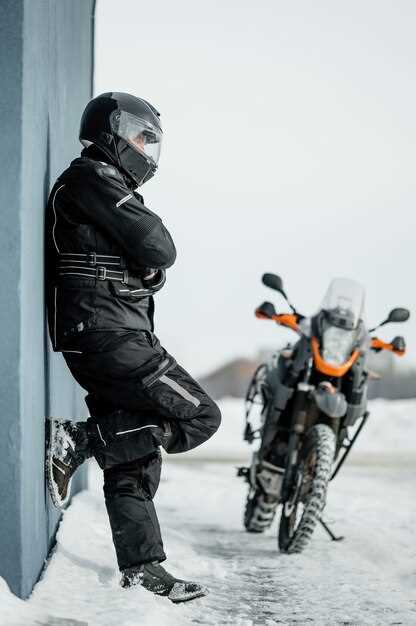
Motorcycle riding is an exhilarating experience that combines the thrill of speed with the freedom of the open road. However, to truly enjoy this adventure, riders must prioritize comfort and safety. One of the essential components of a motorcycle outfit is the base layer. Motorcycle-specific base layers are designed to provide optimal performance, protection, and comfort, allowing riders to focus on the journey ahead.
Base layers serve multiple purposes, including moisture management, thermal regulation, and chafing reduction. Unlike regular athletic wear, these specially designed garments can withstand the rigors of motorcycling, ensuring that riders remain comfortable regardless of weather conditions. By understanding the various materials and technologies used in motorcycle-specific base layers, riders can make informed choices that enhance their riding experience.
In this article, we will delve into the key features of motorcycle-specific base layers, explore the benefits they offer, and discuss how to select the right base layer for your riding style and preferences. Whether you are a seasoned rider or new to the world of motorcycling, understanding these garments will be invaluable in creating an optimal riding experience.
Key Materials Used in Motorcycle Base Layers

Motorcycle base layers are designed to provide comfort, moisture management, and thermal regulation during rides. The choice of materials directly influences the performance of these garments. Here are some of the key materials commonly used in motorcycle base layers:
Polyester: This synthetic fiber is widely used due to its durability and excellent moisture-wicking properties. Polyester effectively pulls sweat away from the skin, helping to keep riders dry and comfortable. It also resists shrinking and stretching, ensuring a consistent fit over time.
Nylon: Known for its strength and abrasion resistance, nylon is another popular fabric in base layers. It is lightweight, dries quickly, and offers good elasticity, allowing for freedom of movement. Additionally, nylon is often blended with other materials to enhance performance attributes.
Merino Wool: A natural fiber, merino wool is prized for its thermal regulation properties. It effectively insulates in cold weather while remaining breathable in warmer conditions. Moreover, merino wool has natural moisture-wicking and odor-resistant qualities, making it ideal for long rides.
Spandex: Often incorporated into base layers for added stretch, spandex enhances the fit and allows for greater flexibility. This elastic component ensures that the garment moves with the rider, contributing to overall comfort during dynamic riding situations.
Carbon Fiber: Some high-performance base layers incorporate carbon fiber for its anti-static properties and ability to reduce temperature fluctuations. It can help manage body heat effectively, promoting a stable thermal environment even under varying conditions.
Bamboo Fiber: An eco-friendly option, bamboo fiber is naturally breathable, moisture-wicking, and antibacterial. It is gaining popularity in motorcycle base layers for its soft texture and comfort against the skin, as well as its ability to regulate temperature.
Understanding these materials helps riders choose the right base layer for their specific needs, ensuring a more enjoyable and safer riding experience.
Choosing the Right Fit for Maximum Comfort While Riding

When selecting motorcycle-specific base layers, the fit is crucial for ensuring comfort during rides. A well-fitted base layer should snugly conform to the body without being restrictive. This close fit helps in moisture management and temperature regulation, which are essential for maintaining comfort over long distances.
Consider the material composition of the base layer. Fabrics such as merino wool and moisture-wicking synthetic blends offer the best performance. These materials not only provide a comfortable fit but also prevent chafing and promote airflow. Look for seams and stitching; flatlock seams are ideal as they minimize irritation against the skin.
Size is another important aspect. Base layers typically come in a range of sizes from small to extra-large. It is advisable to refer to the manufacturer’s sizing chart to find the best fit. When trying on a base layer, ensure that it sits securely on the body without leaving excessive slack, which can lead to discomfort during rides.
Additionally, pay attention to the length of the base layer. A longer cut can help keep the garment in place while riding, preventing it from riding up and exposing skin to the wind and elements. Some designs incorporate longer backs, which provide extra coverage and prevent cold drafts.
Another factor to consider is style. Base layers are available in various designs, including crew necks, zip-ups, and sleeveless options. Choose a style that complements your riding jacket and fits well under your armor and other protective gear. A harmonious fit improves overall comfort and mobility on the bike.
Lastly, don’t forget about layering. Base layers are designed to be worn underneath other garments. Ensure that the fit of your base layer allows for easy layering without adding bulk, which can hinder movement and comfort. The right fit will enhance your overall riding experience, allowing you to focus on the road ahead.
Care and Maintenance Tips for Longevity of Base Layers
To ensure the longevity of your motorcycle-specific base layers, it is crucial to adhere to proper care and maintenance practices. Start by checking the care label on your base layers for specific washing instructions. Most of these garments are made from moisture-wicking materials that require gentle washing to maintain their functionality.
Wash your base layers in cold water to preserve the elasticity and prevent shrinkage. Use a mild detergent that is free of bleach and fabric softeners, as these can degrade the performance of technical fabrics over time. It is advisable to turn the garments inside out before washing to minimize wear on the outer surface.
Avoid using a dryer; instead, line dry your base layers in a shaded area. High heat can damage the fibers and lead to a loss of moisture-wicking capabilities. If you must use a dryer, opt for a low heat setting and remove the garments while they are still slightly damp to prevent over-drying.
Store your base layers in a cool, dry place, and avoid folding them in a way that creates creases or stress on the fabric. Hanging them can help maintain their shape. Additionally, keep them away from direct sunlight, as prolonged exposure can cause fading and weaken the material.
Regular inspection is also essential. Look for signs of wear and tear, such as fraying seams or developing holes. Address any damages promptly by patching them or replacing the item if necessary. Following these care and maintenance tips will greatly enhance the durability and performance of your motorcycle-specific base layers, ensuring they remain effective for many rides to come.